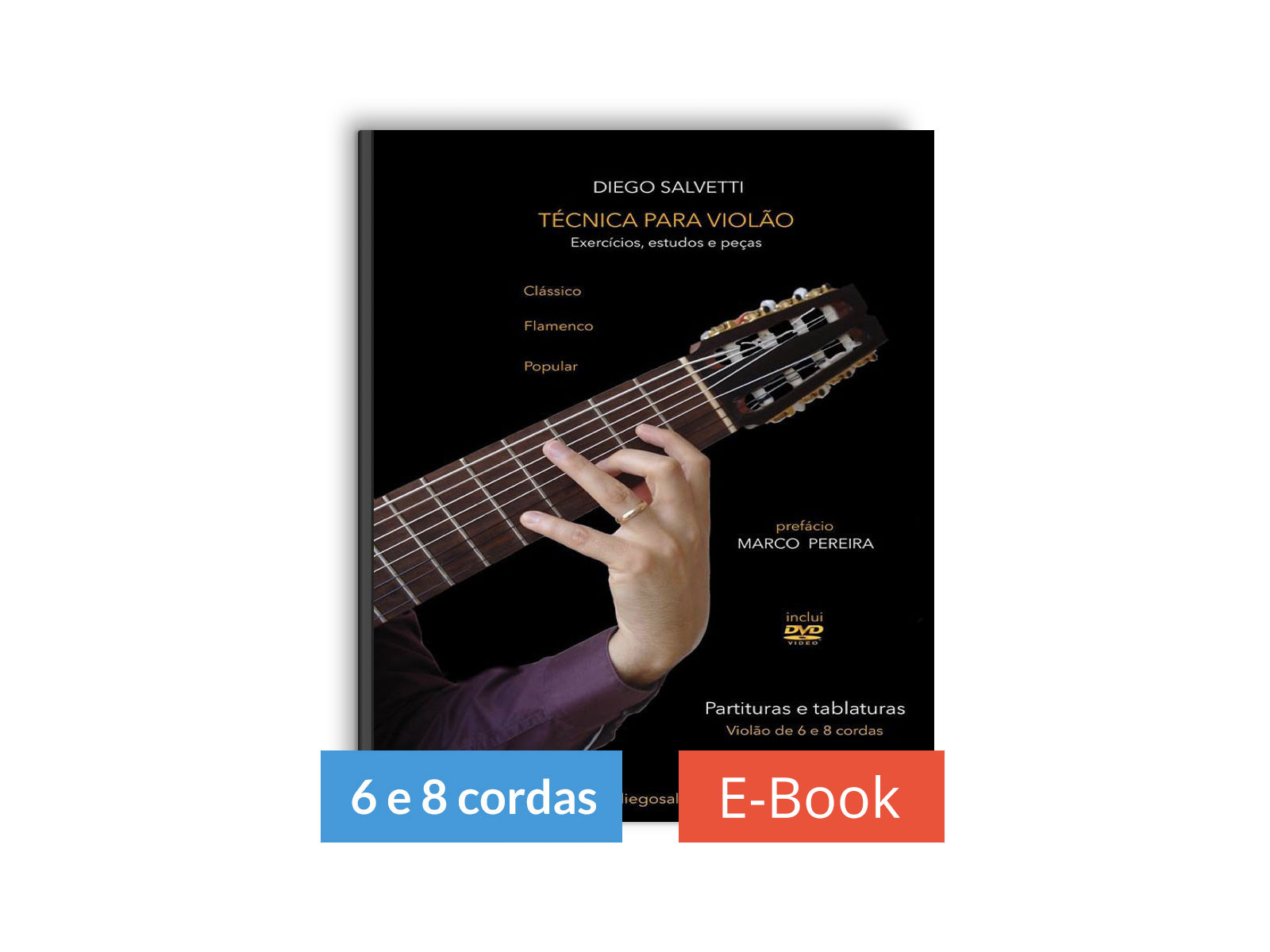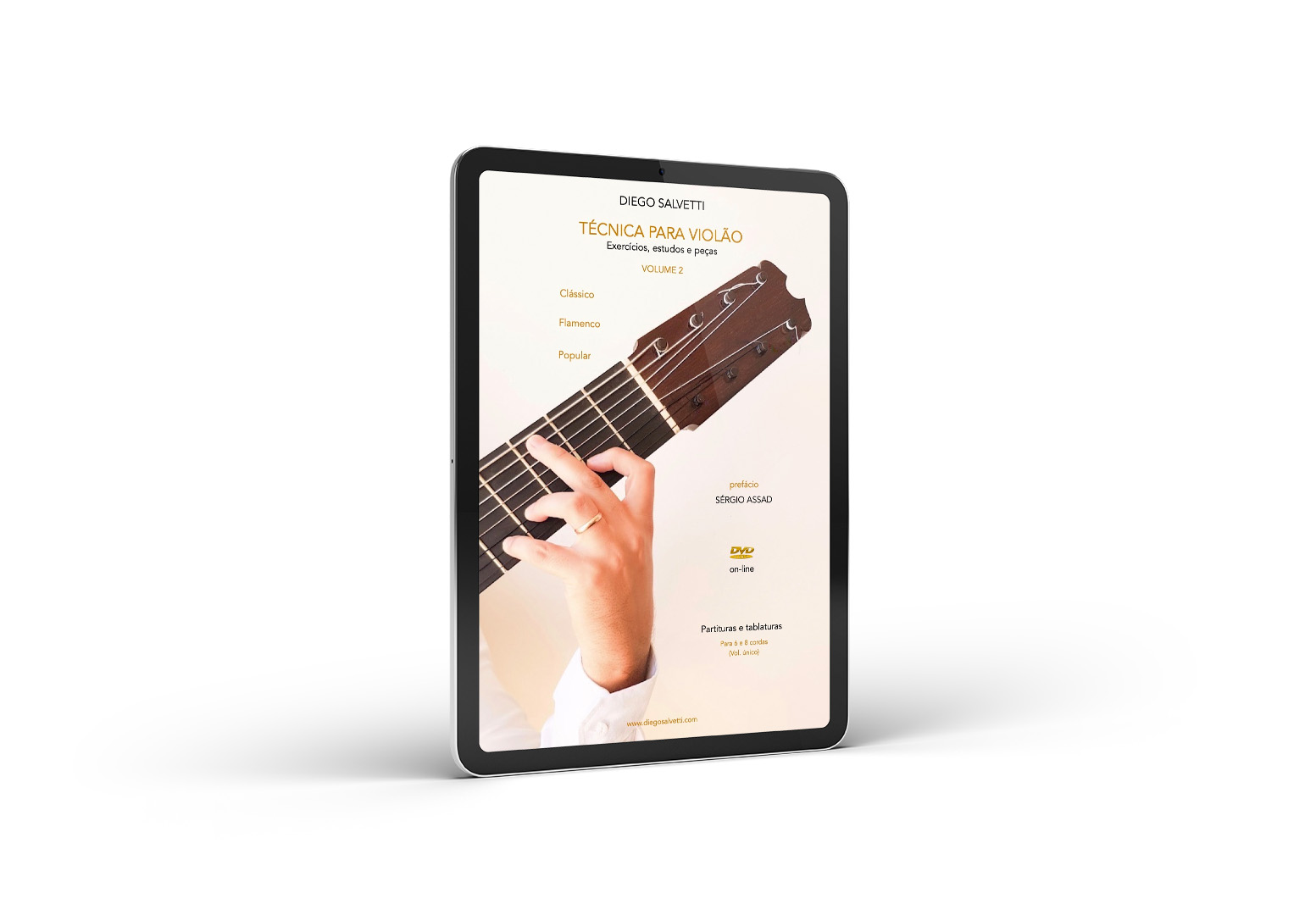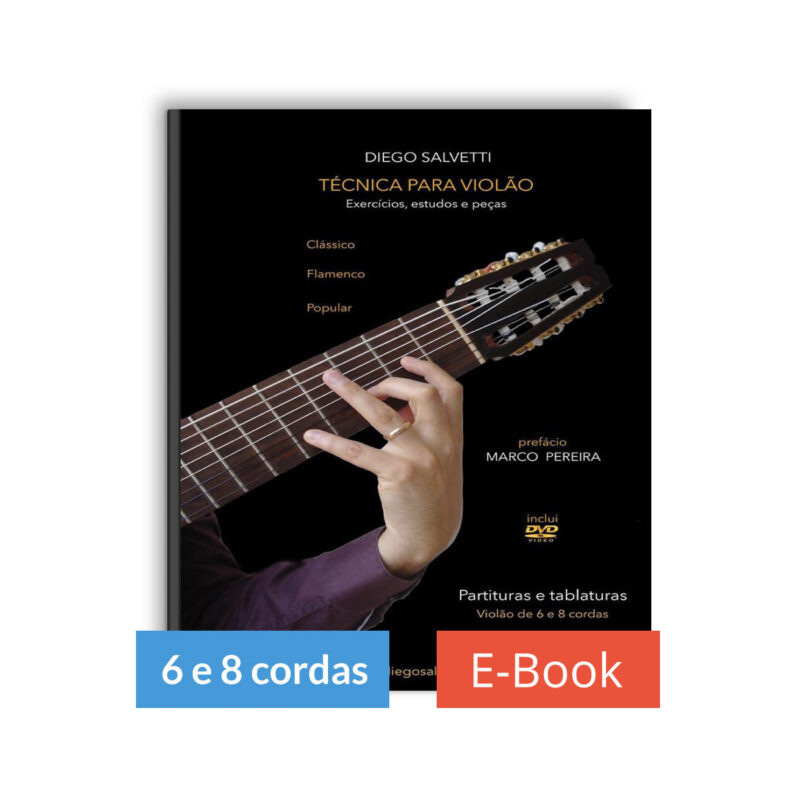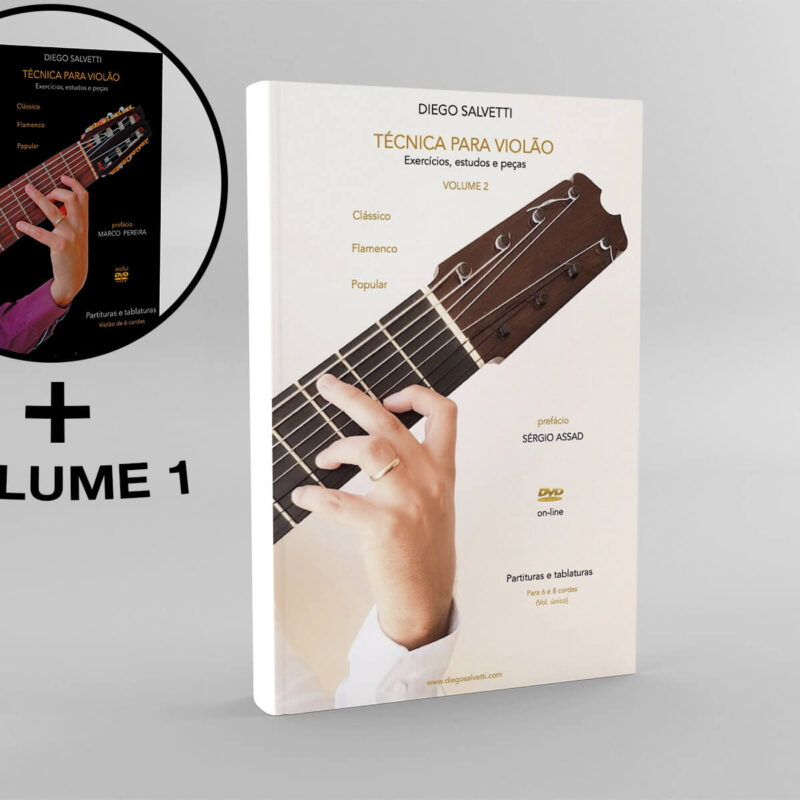
E-Book – 6 and 8 Cordas (Ideal for 7 strings)
May 5, 2018
Book – Technique for Guitar – Vol 2
May 17, 2021E-Book – Technique for Guitar – Vol 2
R$99,90 Original price was: R$99,90.R$65,90Current price is: R$65,90.
I am a great believer in the possibility of moving from one musical style to another without crossing any bridge but diving into the deep waters of the musical universe.
This work is just a continuation of the first volume of the book “Technique for Guitar” (classical, flamenco or Brazilian guitar). In thirty years of experience with this wonderful instrument, I realize how my classical training has provided me with a solid foundation to be able walk through a new universe on the Brazilian guitar, flamenco classical guitar. These three guitar schools – classical, flamenco and Brazilian – are certainly fundamental pillars in the universe of guitar repertoire. Recently, the flamenco and Brazilian schools have also been creating and making available a didactic approach that the classical school has been exploring for centuries. Understanding and studying the various aspects of the guitar not only enriches us musically and technically but is also a sign of great love for this inseparable friend and of humility in always being willing to start from scratch.
After many years of academic study in classical guitar, when I approached the flamenco and Brazilian guitar, I remember the absolute ignorance in which that I found myself, both in theoretical and technical-practical knowledge. I had to start again from scratch.
To dive into this mixture and ‘good contamination’ opens horizons. We can all find and create our identity. We can all have originality and a differential work. There are many rhythms, techniques, styles, and languages that we can connect.
This book was born from the need to produce a collection of exercises, studies and pieces, which represent the technical, compositional and also ‘musical’ path I have developed in these recent years. Encouraged by several requests from friends – students and lovers of my work, who were looking for scores of my compositions, studies or simply exercises – I decided to produce this material. I warn, however, that this work is not intended to be understood as a method, but simply as a collection.
In this way, this project resulted in a technical book, even without my intention to create a method of technique. It is a selection of the material, which I most enjoy playing, to keep my technique trained.
Specifically, in this 2nd volume I kept the pattern of volume 1: 10 exercises, 10 studies and 10 compositions. It is the path of a student: train well the mechanics and technique to let the musicality speak better.
The exercises pay particular attention to the mechanics of the movements without a musical purpose. They are exercises that become an effective academy for strengthening the fingers of both hands.
The studies (or micro-studies) include a panoramic view with reference to pulgar, alzapúa, arpeggio, picado and tremolo techniques, campanellas, finger combinations of the right hand, and techniques in general.
In the creation process I have tried, almost always to compose exercises and studies as ‘musical’ as possible, except for some which obviously have no aesthetic objective but didactic.
It is worth mentioning a special content of this book which is the right-hand technique that uses 3 fingers: I could barely find this kind of content out there. A technique to develop the scales by saving and distributing the movements on three fingers and therefore adding the ring finger to the traditional i-m (or m-i) technique. It is a somewhat ‘dangerous’ technique because it offers little satisfaction at the beginning besides the risk of approaching in the wrong way repetitive exercises that do not give results. That is why I created exercises and studies with string changes, ascending and descending, and the sequences a-m-i, m-i-a, i-a-m distributed in rhythmic-melodic cells.
As for the pieces, I chose among some of my own compositions which I found to require a more advanced technical level. Sometimes, especially among the pieces with a more Brazilian and flamenco flavor, as for example ‘La tarde no Campo’, the score does not correspond exactly to the swing of the executive conduction, which is influenced by something the musician feels and lives at that exact moment he or she is playing. But this is an extremely positive factor, and not negative, as some might think. Some rare notes for the six-string version of the pieces are different from the eight-string version, simply as a matter of adaptation, nothing that interferes with the substance of the melody or harmony. I want to emphasize that in this specific work, I am particularly pleased with the adaptation to six strings of some pieces that were born on the eight-string guitar.
The book also presents score, tablature and fingering, for both hands, with particular care for the most emblematic and characteristic passages of technical development and for the simplest parts so that the student has a minimum reference.
This book, accompanied by a DVD, is intended, first of all, for me, as I am a practicing student of this material since I recognize how necessary it is always to study such advanced content to improve the technique.
This collection is also addressed to all students, friends and fellow guitarists who want to develop and improve their own technical ability or who would just like to play some of my compositions. I share with you, dear reader, the dream that one day the 8-string guitar can become as widespread and popular as the six- or seven- string guitar in Brazil. I hope this book represents an incentive to realize how two extra strings, on the strings, constitute a great increase in the guitar’s technique, composition and aesthetic-musical quality.
Finally, I advise the reader to study this material with the rigorous and gradual use of the metronome, always leaving the right hand totally relaxed and, at the same time, alternating between playing hard and then lighter with fair resting times.
Standard tuning: 1st E, 2nd B, 3rd G, 4th D, 5th A, 6th E, 7th B, 8th G; when different it is always noted at the beginning of the score.
Related products
-
E-Book – 6 and 8 Cordas (Ideal for 7 strings)
R$79,90Original price was: R$79,90.R$53,90Current price is: R$53,90. -
Combo Ebook – Volume 1 & 2
R$119,80Original price was: R$119,80.R$104,90Current price is: R$104,90.




Reviews
There are no reviews yet.